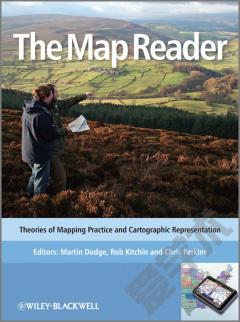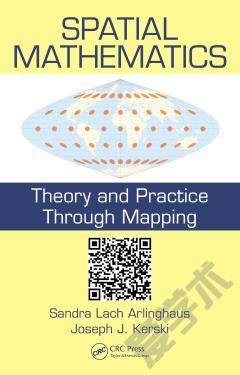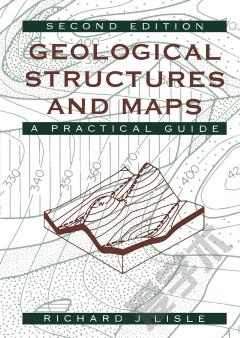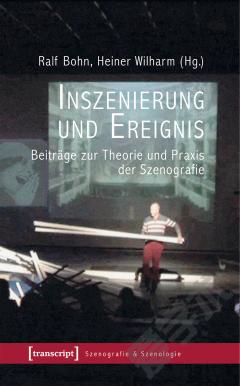The Map Reader —— Theories of Mapping Practice and Cartographic Representation
----- 地图阅读器:地图测绘和呈现的理论
The Editors. Preface. Acknowledgements. Colour Plate One: Cartographic Production. Section One Conceptualising Mapping. 1.1 Introductory Essay: Conceptualising Mapping (Rob Kitchin, Martin Dodge and Chris Perkins). 1.2 General Theory, from Semiology of Graphics (Jacques Bertin). 1.3 On Maps and Mapping, from The Nature of Maps: Essays Toward Understanding Maps and Mapping (Arthur H. Robinson and Barbara B. Petchenik). 1.4 The Science of Cartography and its Essential Processes (Joel L. Morrison). 1.5 Analytical Cartography (Waldo R. Tobler). 1.6 Cartographic Communication (Christopher Board). 1.7 Design on Signs / Myth and Meaning in Maps (Denis Wood and John Fels). 1.8 Deconstructing the Map (J.B. Harley). 1.9 Drawing Things Together (Bruno Latour). 1.10 Cartography Without 'Progress': Reinterpreting the Nature and Historical Development of Mapmaking (Matthew H. Edney). 1.11 Exploratory Cartographic Visualisation: Advancing the Agenda (Alan M. MacEachren and Menno-Jan Kraak). 1.12 The Agency of Mapping: Speculation, Critique and Invention (James Corner). 1.13 Beyond the 'Binaries': A Methodological Intervention for Interrogating Maps as Representational Practices (Vincent J. Del Casino Jr. and Stephen P. Hanna). 1.14 Rethinking Maps (Rob Kitchin and Martin Dodge). Colour Plate Two: Mapping the Internet. Section Two Technologies of Mapping. 2.1 Introductory Essay: Technologies of Mapping (Martin Dodge, Rob Kitchin and Chris Perkins). 2.2 A Century of Cartographic Change, from Technological Transition in Cartography (Mark S. Monmonier). 2.3 Manufacturing Metaphors: Public Cartography, the Market, and Democracy (Patrick H. McHaffie). 2.4 Maps and Mapping Technologies of the Persian Gulf War (Keith C. Clarke). 2.5 Automation and Cartography (Waldo R. Tobler) 2.6 Cartographic Futures on a Digital Earth (Michael F. Goodchild). 2.7 Cartography and Geographic Information Systems (Phillip C. Muehrcke). 2.8 Remote Sensing of Urban/Suburban Infrastructure and Socio-Economic Attributes (John R. Jensen and Dave C. Cowen). 2.9 Emergence of Map Projections, from Flattening the Earth: Two Thousand Years of Map Projections (John P. Synder). 2.10 Mobile Mapping: An Emerging Technology for Spatial Data Acquisition (Rongxing Li). 2.11 Extending the Map Metaphor Using Web Delivered Multimedia (William Cartwright). 2.12 Imaging the World: The State of Online Mapping (Tom Geller). Colour Plate Three: Pictorial Mapping. Section Three Cartographic Aesthetics and Map Design. 3.1 Introductory Essay: Cartographic Aesthetics and Map Design (Chris Perkins, Martin Dodge and Rob Kitchin). 3.2 Interplay of Elements, from Cartographic Relief Presentation (Eduard Imhof). 3.3 Cartography as a Visual Technique, from The Look of Maps (Arthur H. Robinson). 3.4 Generalisation in Statistical Mapping (George F. Jenks). 3.5 Strategies for the Visualisation of Geographic Time-Series Data (Mark Monmonier). 3.6 The Roles of Maps, from Some Truth with Maps: A Primer on Symbolization and Design (Alan M. MacEachren). 3.7 Area Cartograms: Their Use and Creation (Daniel Dorling). 3.8 ColorBrewer.org: An Online Tool for Selecting Colour Schemes for Maps (Mark Harrower and Cynthia A. Brewer). 3.9 Maps, Mapping, Modernity: Art and Cartography in the Twentieth Century (Denis Cosgrove). 3.10 Affective Geovisualisations (Stuart Aitken and James Craine). 3.11 Egocentric Design of Map-Based Mobile Services (Liqiu Meng). 3.12 The Geographic Beauty of a Photographic Archive (Jason Dykes and Jo Wood). Colour Plate Four: Visualising Cartographic Colour Schemes and Mapping Spatial Information Space. Section Four Cognition and Cultures of Mapping. 4.1 Introductory Essay: Cognition and Cultures of Mapping (Chris Perkins, Rob Kitchin and Martin Dodge). 4.2 Map Makers are Human: Comments on the Subjective in Maps (John K. Wright). 4.3 Cognitive Maps and Spatial Behaviour: Process and Products (Roger M. Downs and David Stea). 4.4 Natural Mapping (James M. Blaut). 4.5 The Map as Biography: Thoughts on Ordnance Survey Map, Six-Inch Sheet Devonshire CIX, SE, Newton Abbot (J.B. Harley). 4.6 Reading Maps (Eileen Reeves). 4.7 Mapping Reeds and Reading Maps: The Politics of Representation in Lake Titicaca (Benjamin S. Orlove). 4.8 Refiguring Geography: Parish Maps of Common Ground (David Crouch and David Matless). 4.9 Understanding and Learning Maps (Robert Lloyd). 4.10 Citizens as Sensors: The World of Volunteered Geography (Michael F. Goodchild). 4.11 Usability Evaluation of Web Mapping Sites (Annu-Maaria Nivala, Stephen Brewster and L. Tiina Sarjakoski) Colour Plate Five: Visualising the Efforts of Volunteer Cartographers. Section Five Power and Politics of Mapping. 5.1 Introductory Essay: Power and Politics of Mapping (Rob Kitchin, Martin Dodge and Chris Perkins). 5.2 The Time and Space of the Enlightenment Project, from The Condition of Postmodernity (David Harvey). 5.3 Texts, Hermeneutics and Propaganda Maps (John Pickles). 5.4 Mapping: A New Technology of Space Geo-Body, from Siam Mapped: A History of the Geo-Body of a Nation (Thongchai Winichakul). 5.5 First Principles of a Literary Cartography, from Territorial Disputes: Maps and Mapping Strategies in Contemporary Canadian and Australian Fiction (Graham Huggan). 5.6 Whose Woods are These? Counter-Mapping Forest Territories in Kalimantan, Indonesia (Nancy Lee Peluso). 5.7 A Map that Roared and an Original Atlas: Canada, Cartography, and the Narration of Nation (Matthew Sparke). 5.8 Cartographic Rationality and the Politics of Geosurveillance and Security (Jeremy W. Crampton). 5.9 Affecting Geospatial Technologies: Toward a Feminist Politics of Emotion (Mei-Po Kwan). 5.10 Queering the Map: The Productive Tensions of Colliding Epistemologies (Michael Brown and Larry Knopp). 5.11 Mapping the Digital Empire: Google Earth and the Process of Postmodern Cartography (Jason Farman). Colour Plate Six: Cartographies of Protest. Index.
{{comment.content}}








 京公网安备 11010802027623号
京公网安备 11010802027623号